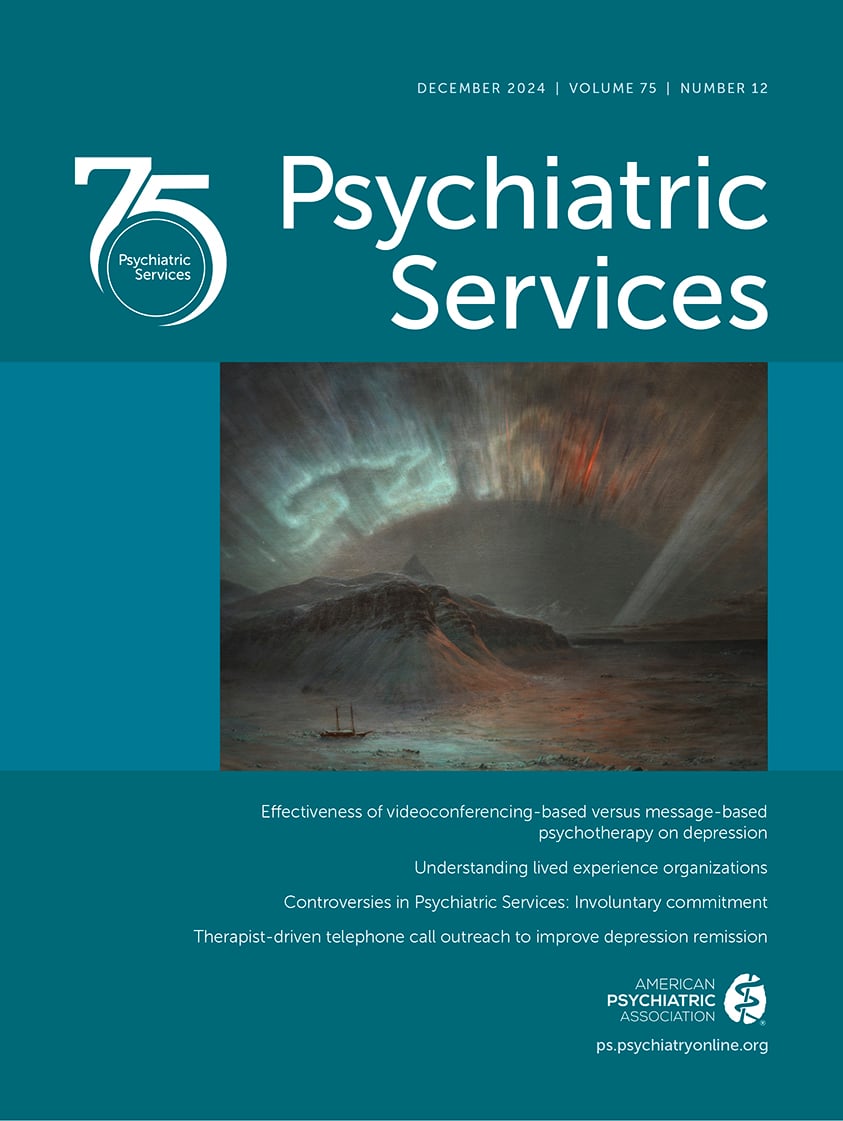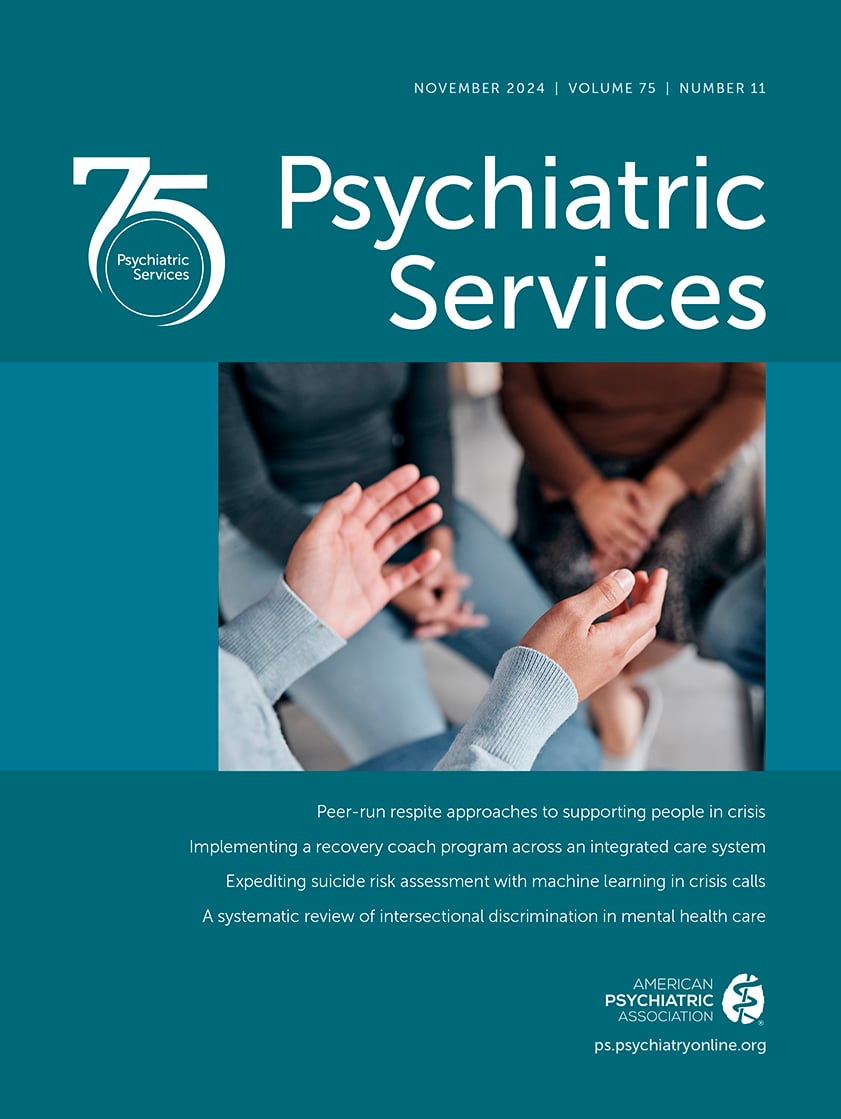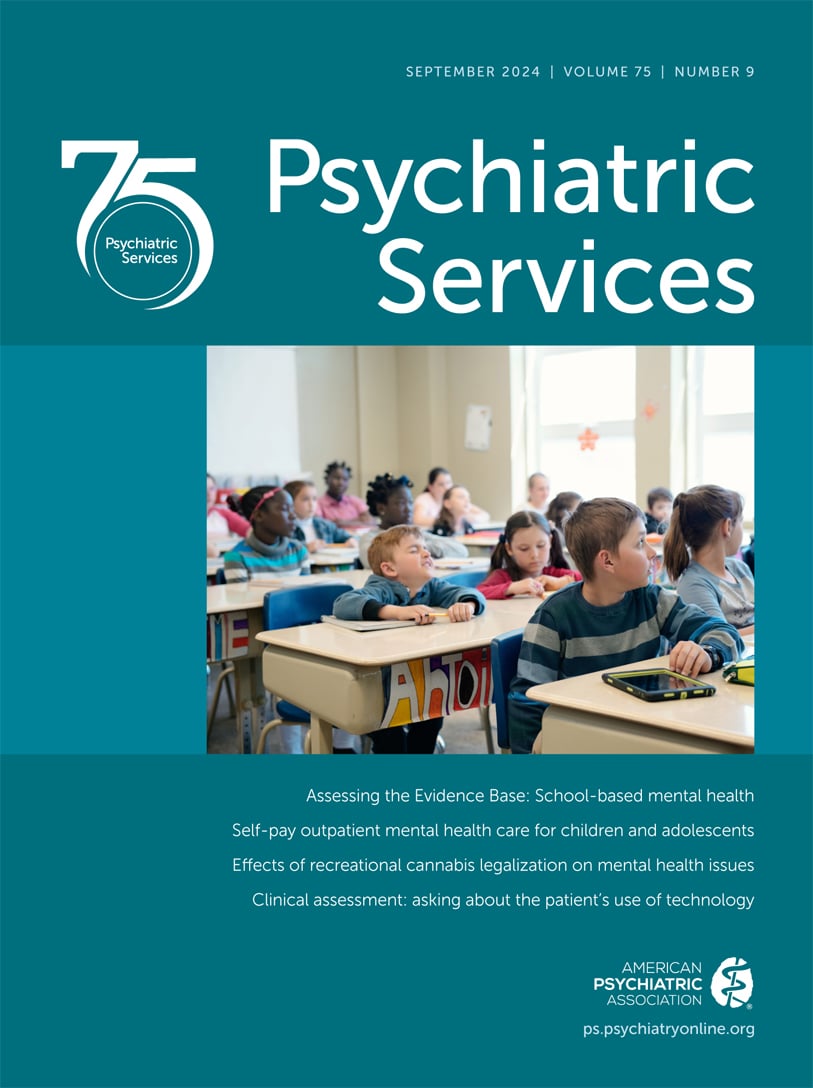Psychiatric Services
- Volume 54
- Number 2
- February 2003
Taking Issue
Departments
Columns
Other Articles
Publication date: 01 February 2003
Pages183–187OBJECTIVE: The authors synthesized evidence from a systematic review of the literature reporting substantiated performance differences between private for-profit and private nonprofit psychiatric inpatient care providers in the United States since 1980. ...
https://doi.org/10.1176/appi.ps.54.2.183Publication date: 01 February 2003
Pages188–194OBJECTIVE: The authors reviewed studies of Medicaid spending on mental health and substance abuse services. METHODS: Studies were identified through a search of MEDLINE and bibliographies of known articles on mental health and substance abuse spending and ...
https://doi.org/10.1176/appi.ps.54.2.188Publication date: 01 February 2003
Pages195–200OBJECTIVE: The authors examined the efficacy of a multifaceted intervention designed to contain the cost of prescribing selective serotonin reuptake inhibitors (SSRIs) to inpatients and outpatients served by a Veterans Affairs (VA) medical center. METHODS:...
https://doi.org/10.1176/appi.ps.54.2.195Publication date: 01 February 2003
Pages201–207OBJECTIVE: This study compared client characteristics, service use, and health care costs of two groups of veterans who were contacted by outreach workers: a group of veterans who were contacted while incarcerated at the Los Angeles jail and a group of ...
https://doi.org/10.1176/appi.ps.54.2.201Publication date: 01 February 2003
Pages208–213OBJECTIVE: Depression among older home care patients is prevalent but undertreated. The purpose of this study was to investigate the ability of home health nurses to correctly identify depression among older patients and to describe nurse and patient ...
https://doi.org/10.1176/appi.ps.54.2.208Publication date: 01 February 2003
Pages214–218OBJECTIVE: This study of women Veterans Affairs (VA) health care patients screened for the prevalence of past-year smoking, hazardous and problem drinking, other drug abuse, and psychiatric disorders. METHODS: A survey was mailed to women veterans who had ...
https://doi.org/10.1176/appi.ps.54.2.214Publication date: 01 February 2003
Pages219–225OBJECTIVE: The aim of this study was to determine whether supplementing traditional cognitive-behavioral therapy for depression with clinical case management would reduce the rate of dropout from care and improve outcomes for ethnically diverse, ...
https://doi.org/10.1176/appi.ps.54.2.219Publication date: 01 February 2003
Pages226–235OBJECTIVE: This study assessed 12-month service use patterns among people with psychotic disorders and sought to identify determinants of service use. METHODS: As part of a large two-phase Australian study of psychotic disorders, structured interviews ...
https://doi.org/10.1176/appi.ps.54.2.226Publication date: 01 February 2003
Pages236–239Health care reform has posed special challenges for departments of psychiatry in academic medical centers. This report describes one department's strategic responses to a marketplace with high penetration by managed care and provides examples of the kinds ...
https://doi.org/10.1176/appi.ps.54.2.236Publication date: 01 February 2003
Pages240–245OBJECTIVE: The needs and characteristics of patients who are referred for psychiatric emergency services vary by the source of referral. Such differences have wider implications for the functioning of the mental health care system as a whole. This study ...
https://doi.org/10.1176/appi.ps.54.2.240Brief Report
Publication date: 01 February 2003
Pages246–248Treatment guidelines are frequently not followed. The authors examined the neuroleptic prescribing practices of psychiatrists responsible for 47 patients with schizophrenia who were being treated at health centers of the Department of Veterans Affairs. ...
https://doi.org/10.1176/appi.ps.54.2.246Publication date: 01 February 2003
Pages249–251This study investigated the prevalence of psychiatric disorders and risk factors for posttraumatic stress disorder (PTSD) and major depressive disorder among bereaved survivors of a severe earthquake in Taiwan. A total of 120 survivors received a ...
https://doi.org/10.1176/appi.ps.54.2.249Letters
Book Reviews:\nBody Image and Modification: New Problem or Ancient Preoccupation?
Book Reviews
News & Notes
Past Issues
View Issues Archive
Vol. 75 | No. 12

Vol. 75 | No. 11

Vol. 75 | No. 10
